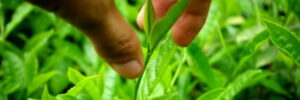
Collecting Herbs
Collecting Herbs:
When gathering or harvesting your herbs, first be absolutely sure you know what you are gathering! This is very important when gathering plants from the wild. Be absolutely certain you know what the plant is before you attempt to use it. If you are not sure of a particular plant, or it “looks like” something but could be something else, leave it alone. You would be better off to purchase the herb through a store or mail order. The alternative may leave you dead. If you care about our natural plants, you will prefer to purchase or grow what you need. Today’s herbal needs are creating quite a strain on the numbers of medicinal plants in the wild.
Know what part of the plant you need. Some plants are used in their entirety, others only specific parts. When you are gathering plants from the wild, remember not to take all of a particular species you may find in an area. Leave some to grow and seed and flourish for the next time you need them. Removing all of a group of plants is rude, and the Goddess would not be pleased. Give thanks to the plants you take for your uses. Sprinkle around some of their seeds, to help them propogate. Give them an offering, i.e. some natural fertilizer, a prayer, etc. in return for your uses. When taking leaves or branches of a plant, leave plenty for the plant to survive. You should offer the same respect to those plants you gather from your own gardens. Be kind to the Mother and all She has to offer, and She will reward you for your efforts.
The parts of the plant above ground should be harvested in the morning, before the heat of the sun has a chance to wilt them. It is preferable to do so when the dew is still on the plants. Leaves should be harvested before the buds and blooms appear, and flowers should be harvested before the fruits and seeds appear. Bark and roots should be harvested in the early spring, just as the plant is beginning to show its leaf buds, or in the fall, just as the leaves are turning. Don’t strip bark from around a tree trunk, as this will kill it. Instead, strip bark from small patches, or particular limbs, to preserve the mother plant for later use, and to preserve its life.
When using an entire plant, it is customary to hang the plant upside down in a dry area free from pests to allow the plant to dry. Make sure your herbs have dried thoroughly before storing them for further use, or you may discover that you have a moldy mess instead of a medicinal herb. Roots should be carefully washed, scraped, and chopped into small pieces to be sure they dry uniformly and thoroughly. Bulbs are tied together and strung up to dry.
The dried portions can then be stored according to your needs. Roots are usually ground into powder for use, or left in small chunks for uses in decoctions, tinctures, and syrups. Leaves are stored in their entirety, or crumbled for use in teas. The same applies for blossoms. Store your herbs in air-tight containers. The best containers to use are colored glass. The herb then does not pick up impurities from plastics, and does not eat through your plastics, as can happen. Store in a dry, cool area, and keep out of the light. This is the reason for using colored glass. Light can often break down the healing properties of your gathered herbs, shortening their shelf life and rendering them nearly useless after a short period of time. If stored properly, the shelf life of dried herbs is approximately one year. Tinctures can be stored for up to two years. Capsules should be used within one year. Once an herb has been ground, it shortens the amount of time the herb is effective. So do pay careful attention to when you have purchased or stored an herb, for maximum effectiveness.
When you use one of your herbs, whether for healing, cooking, or for magick, you should once again give thanks to the Mother for Her bounty.
Teas
The herbs that will be used for herbal teas are generally the cut and sifted form, or the crumbled dried leaves. Herbs should always be prepared in nonmetallic containers. Steep the herbs in a nonmetallic container with water that has just been brought to a boil. This is an infusion, and is used for the more delicate herbs to prevent destroying their healing agents.
A decoction is used to extract the healing agents from herbs that are roots and barks. The herbs are simmered in a nonmetallic cooking container for about one hour. Simmer uncovered until the amount of water is reduced by one half. Those herbs that contain important volatile oils should be simmered in a tightly covered pot.
Don’t add table sugar to herbal teas. If a sweetener is needed, use pure, unmolested honey.
Bolus
A bolus is a suppository. It is made by combining powdered herbs with cocoa butter. The two are mixed together until it is the consistency of stiff pie dough. It is then refrigerated to harden and preserve. Allow to come to room temperature before use. Roll into strips and cut into pieces about one inch long. Boluses are inserted into the rectum for treating hemorrhoids, and into the vagina for treating vaginal infections and irritations, as well as tumors. Boluses are used at night. The cocoa butter will of course melt with your body heat, so take precautions to protect clothing and bedding. Residues of the bolus should be rinsed away the next morning.
Oils
Oil extracts are made from fresh herbs that contain volatile oils used for healing. Fresh herbs are necessary for the extraction of the oils. The fresh herbs are crushed with a mortar and pestle. Olive or sesame oil is then added, at the ratio of one pint of oil for every two ounces of herbs. The mixture is allowed to stand in a warm place, out of direct light, for three days. The oils are stored in dark, glass containers. After the three days, add one capsule of Vitamin E to each bottle for preserving the extracted oils. This is another process that is best done on the new moon.
Syrups
Syrups are used for treating coughs and sore throats, and make it easy to give herbs to children. Two ounces of herb are added to a quart of water in a nonmetallic container, and boiled down slowly and gently until about a pint of liquid is left. Strain while it is still warm, and add two ounces of honey and/or glycerine. Lemon oil or juice can also be added for flavor. Store in a dark glass container.
Capsules
Capsules are the best way to take herbs that do not taste good. They are also the best way to take herbs that need to be ingested over a long period of time, or for those of us who don’t have time at work to make herbal teas. It is best to purchase finely powdered herbs for this purpose. The small “0” sized capsules are used, or the larger “00”. The powdered herbs are blended together, if an herbal combination is desired. Then separate the two halves of the capsule, and fill each half. Then carefully put the two halves back together. Take according to the needs of the treatment.
Tinctures
Tinctures are easy to make, and a very convenient way to make use of the healing herbs in today’s fast society. They are made with the more potent herbs that are generally not taken as herbal teas.
Tinctures are made by combining 1 to 4 ounces of a powdered or thoroughly crushed herb with one pint of alcohol. The alcohol most often used is vodka. The amount of liquid should be more than the herbs can absorb, so you may need to add more as the days go by. It is shaken daily and allowed to stand in a warm place, out of direct light, for two weeks. The liquid is poured through a cloth, such as layers of cheesecloth. The herbs that remain are squeezed thoroughly to remove as much of the liquid from them as possible. Keep the tincture stored in a dark glass bottle or jar. Tinctures are used by the drop. Don’t be afraid of the alcohol content – if you want to be sure the alcohol won’t affect you, or you are a recovering alcoholic, drop the recommended number of tincture drops into a cup of hot water, wait a few moments, and then drink. The alcohol will evaporate. Tinctures can be made of single herbs, or herbal combinations, depending upon your needs. It is traditional magick to begin your tinctures on the night of the new moon, and strain on the full moon, so that the waxing powers of the moon extract the maximum amount of healing agents from the herbs.
Creams
Creams are used to treat skin conditions of all kinds. They can be made by melting petroleum jelly and adding the herbs, although that is rather messy. A better method is to boil approximately 1 cup of the herb(s) to be used in 3 to 4 cups of water, in a non-metallic container, for about 15 minutes for leafy herbs and 30 minutes for root herbs to extract the volatile oils. You can then strain the herbs out, or leave them in if you so desire, depending on the cream you are making. Add 5 ounces of sesame or olive oil to the water remaining and continue to simmer over low heat until all of the water has evaporated. Melt 2 ounces of beeswax, and stir into the oil mixture. TIP: try to have the wax and the oil near the same temp, and stir like crazy! After the mixture cools a bit, add 2 teaspoons of Vitamin E oil as a preservative, and mix it in well. Pour into containers and allow to cool completely. Most creams will keep for up to one year.

 by
by